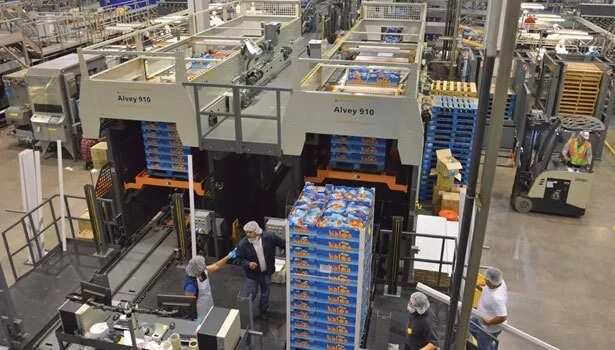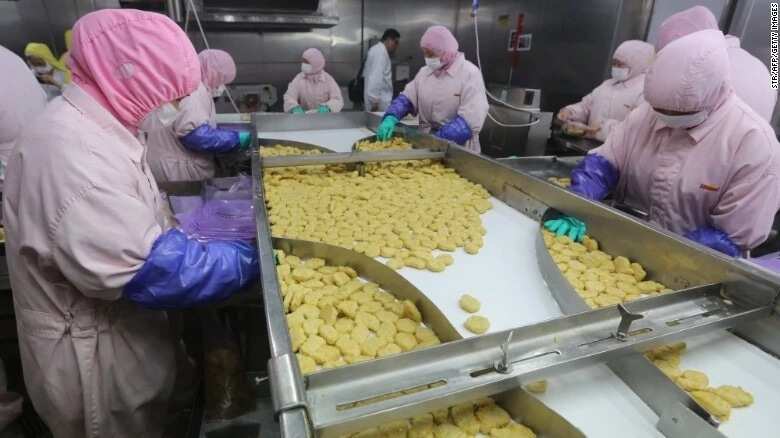What is food hygiene and sanitation
What is food hygiene? Why is it so important? We are going to discuss these issues. Also find out main steps and measures during sanitation. Sometimes it can be matter of life and death. That’s why, each food production should be safe.

What is hygiene?
Hygiene and sanitation are essential components of each production process. The result of this process are food products. Hygiene means all activities and rules that are necessary for the production of safe and high quality products. And sanitation process includes detergents and disinfectants, methods and processes by which hygiene requirements are met.
Washing process
This food hygiene process is very important. Washing is a complex process of removing contaminants. The constant and variable factors should be taken into account for successful washing.
Constant factors
There are some constant factors in the washing process:
- Hygienic design. Machines and equipment must have a hygienic design. It means smooth vertical, beveled or inclined surfaces that are much more convenient to wash than equipment with numerous faces, corners, grooves and rough surfaces.
- Materials. The next important factor is the material from which the equipment is made. It also plays an important role in selecting the necessary detergents and disinfectants. The choice of optimal means requires accurate knowledge of the resistance of the materials used to different types of detergents and disinfectants.
- Water quality. This parameter is important both for predicting the washing result and for taking into account the corrosion of the materials contacted with water. High water hardness, i.e. high content of potassium and magnesium salts, reduces the efficiency of the washing process. First of all, alkaline washing can cause inorganic sediment that serves as a kind of "refuge" for microorganisms.

- To avoid this effect, there are alkaline detergents enriched with special complex compounds that retain inorganic salts in solution or dispersion. High water hardness can also reduce the effect of disinfectants. That’s why, they must also be tested for hard water. On the other hand, soft water has corrosive properties. Water with a chloride content increases the risk of corrosion, especially in conjunction with acid carriers. In this case, we can find the effect of pitting corrosion, especially on stainless steel.
- Contamination. The type, degree and condition of contamination are decisive factors when choosing a detergent. In the food safety, different kinds of contaminants may appear that due to their different physical and chemical characteristics, react differently to the same components of detergents. That’s why, specially created detergents are needed to eliminate all contamination with minimal costs.
Variable factors
- Mechanical force. It helps to eliminate some types of contaminations.
- Exposure time. To remove contaminants, you need a certain period. If the period of the detergent is too short, the washing result will not be good. If the detergent is applied too long, the surface of equipment undergoes the risk of corrosion.
- Temperature. Washing should take place at a temperature higher than the melting point of fat and lower than the temperature of coagulation of proteins. Practical observations have shown that to eliminate impurities containing fat, the temperature should be at least 55 °C.
- Concentration. Too low concentration of detergent does not lead to complete purification and if it has excessively high concentration - production costs are prohibitively high, the risk of corrosion increases, and the environment is polluted.

READ ALSO: Importance of food safety and sanitation
Importance of food hygiene
When washing, both contaminants and part of the presented microorganisms are eliminated. In the process of disinfection, all the pathogenic microorganisms must be removed. For the success of disinfection, the same factors as for the washing process are decisive. These are temperature, mechanical strength, exposure time, type and concentration of the disinfectant.
Organic pollutants usually reduce the effectiveness of all disinfectants. That’s why, before disinfection, this type of contamination should be eliminated. The important role in disinfection is played by the type and quantity of microorganisms that must be destroyed. For example, residual contaminations that were preserved after washing in small cracks.
The choice of detergents
When choosing a disinfectant, the following factors should be considered:
- broad spectrum of action or a narrow focus;
- action under certain conditions (time, temperature, residual pollution, etc.);
- rapid effect in solution;
- resistance of the surface material to the preparation, and the effect of the preparation on the environment;
- availability and economy.
To achieve the required disinfecting effect, it is necessary to follow the recommendations of the manufacturer of this product. For example, concentration, exposure period, temperature, etc. These parameters should be recorded in the relevant sanitary plans, and they must be strictly followed for successful food sanitation. It is recommended to remain disinfected surfaces dry before production beginning. It will limit the possible growth of unwanted microorganisms.
Personal hygiene
One of the most important rules in the kitchen hygiene. Despite the mechanization and automation of modern production, human hands are the most important working tool. That’s why, they can cause a contamination. Hand washing reduces the number of microorganisms, but it is not able to eliminate all microorganisms from the surface of the hands. They should be washed properly. In addition, to maintain the hygiene of hands at a high level, it is also necessary to take care of the hygiene of the nails. If this is technologically feasible, workers should have appropriate, conveniently placed equipment for washing, drying and disinfecting their hands.

Hygiene guide
All information concerning hygiene and sanitation in the enterprise should be combined in the hygienic manual. All the workers must see it during working process and follow it. Each employee as well as employer are responsible for hygiene in the food enterprise. Hygienic guidance for a food company can be divided into 4 main areas:
- Sanitary plans
- Detergents and disinfectants
- Equipment for washing and disinfection
- Trainings.
Now you know what is food safety. So, in conclusion we want to say that Sanitary plans should be clear and easy for the personnel. That’s why it is desirable to include there graphic symbols that clearly depict each of the operations.
READ ALSO: Importance of food security in Nigeria
Source: Legit.ng




